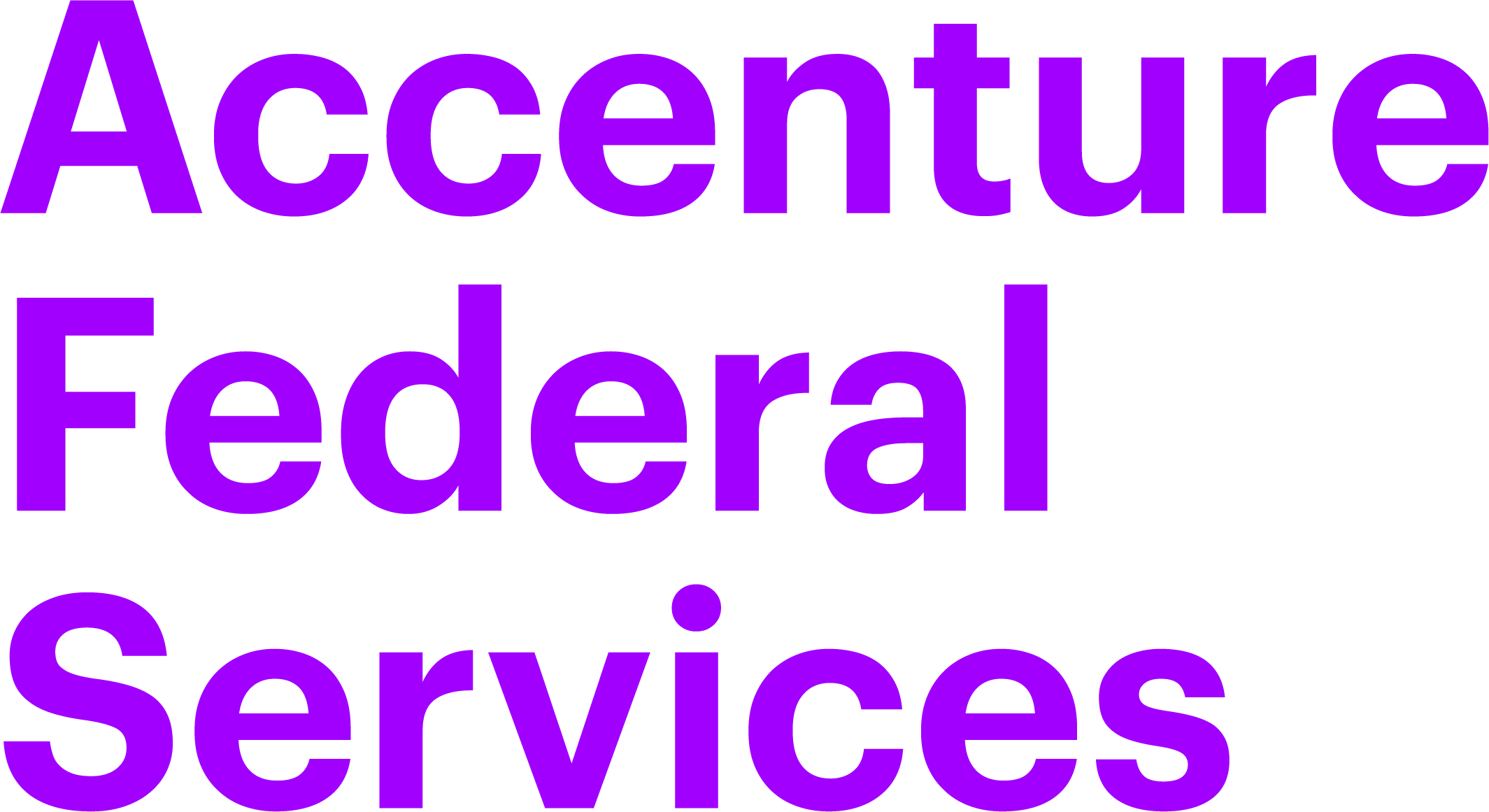sponsor content What's this?
Safeguarding Supplies

Presented by
Accenture Federal Services

A new ‘stress test’ approach to supply chain resiliency.
COVID-19 highlighted the fragile nature of the global supply chains, including those serving the U.S. federal government. Beginning with the scramble for protective personal equipment (PPE) at the start of the pandemic, it became clear that an overreliance on just-in-time delivery and off-shore manufacturing, coupled with a profound lack of transparency, posed a significant threat to supply chains’ stability.
The impacts have been far reaching: The Institute for Supply Chain Management found 97 percent of survey respondents across a range of industries had seen their supply chains negatively affected by COVID-19. According to Stéphane Crosnier, a managing director in Accenture’s global supply chain & operations business, “the pandemic has disrupted supply chains globally, underscoring the need for more relevant approaches and more intelligent, transparent systems that better anticipate and respond faster to unexpected changes.”
President Joe Biden has recognized the urgent nature of the situation. In February, he issued an executive order formally launching a 100-day government review of potential vulnerabilities in U.S. supply chains for a range of critical items, including computer chips, medical gear, electric-vehicle batteries and specialized minerals. He called technology supply-chain resilience “an issue of both concern to our economic security, as well as our national security”.
What we are discovering is that this challenge is one of focus and stated priorities. As Forrester noted in a recent post, “…firms have a myriad of technologies at their disposal (e.g., big data, internet-of-things sensors, AI, blockchain, predictive analytics, and crowdsourcing platforms), but these technologies optimize supply chains for efficiency and profitability, not risk identification or mitigation. In the meantime, the supply chain risk management tech stack most often consists of Excel and SharePoint.”
The Federal government, with its critical national security and citizen services missions, may be especially at risk.
The complexity of government acquisitions puts supply chains in further peril. “There’s a lack of end-to-end visibility, with deep and often unrecognized or underappreciated layers of interdependency among manufacturers, contractors, and end users,” said Jeffrey Scott Miller, a managing director who leads the supply chain & operations practice for Accenture Federal Services.
To address these global concerns, Accenture teamed recently with the Massachusetts Institute of Technology (MIT) researchers to create the supply chain “stress test,” a new tool for adding resilience and transparency across supply chains.
The stress test aims to deliver new insights into supply chain resiliency, including for the federal government.
A new approach
The supply chain resiliency stress test “looks at the potential for operational and financial risks created by major market disruptions, disasters, or other catastrophic events,” said Radica Sipcic, PhD, a digital transformation expert at Accenture Federal Services.
“It leverages Accenture’s supply chain expertise and MIT’s data science capabilities to quantify supply chain resilience into a single index,” she said.
Specifically, the stress test builds upon research and risk models created by MIT’s Dr. David Simchi-Levi that assess the potentially catastrophic shock created by low-probability, high-impact events that often lack historical precedent.
The aim is to give federal government a better understanding of supply chain vulnerabilities. This in turn “could drive new levels of resiliency. It could help agencies maintain mission continuity and meet citizens’ needs in times of crisis by enabling them to proactively assess risks and prepare for potential disruptions,” said Sipcic.
The stress test looks at an organization’s ability to sustain its supply chain in the face of potential disruptions. Specifically, it leverages data to create a “digital twin” of an organization’s supply chain, and then deploys against that model a range of more than forty potential scenarios – events that could impact the organization’s ability to serve citizens, employees, and society.
These disruptive events might include sudden spikes or drops in demand, the shutdown of a major supplier, scarcity of a critical raw material, or disruption of a key port.
“Based on these inputs, the stress test can deliver key insights into the resiliency of a given supply chain, helping an organization evaluate its own readiness for different scenarios,” Miller said.
The stress test generates solid metrics describing an organization’s ability to react to a disruption scenario. From there a government agency can rethink its approach: Leaders can prioritize aspects of the supply chain, reconfiguring manufacturing strategies and fine-tuning their requirements for supply chain participants and partners. They could build strategic reserves and stockpiles in anticipation of disruptive events.
President Biden has met with bipartisan lawmakers to endorse just such an approach, saying contingency plans are needed to address supply chain risk. He has called for a blend of enhanced domestic production, strategic stockpiles, and development of surge capacity, among the possible mitigations.
“By optimizing supply chains for resiliency, agencies can better keep the country safe, ensuring the effective delivery of key citizen services, even in turbulent times,” Sipcic said.
Federal Implications
Even before COVID-19, federal agencies were seeing signs that their supply chains might be in peril. In recent years, concerns about counterfeit electronics, especially within the defense industrial base, have shined a spotlight on supply-chain issues.
The Biden Administration’s February 2021 executive order on America’s supply chains recognizes the risk in the realm of rare minerals, calling for safeguard to ensure a steady supply of minerals that are essential to national security. And that’s just one example of the present vulnerability. As COVID-19 and the PPE crisis have shown, government still may not have full grasp of where goods come from or how readily they may be available, especially in times of unexpected need.
Government has made some effort to address this issue. FEMA’s Supply Chain Task Force, for instance, has been partnering with industry to maximize the availability of critical protective and lifesaving resources in the midst of the pandemic. But much remains to be done.
A recent GAO report, for example, showed that few of the 23 civilian Chief Financial Officers Act agencies had implemented selected foundational practices for managing certain supply chain risks. These risks include “threats posed by counterfeiters who may exploit vulnerabilities in the supply chain and, thus, compromise the confidentiality, integrity, or availability of an organization’s systems and the information they contain.” None of the 23 agencies fully implemented all of the recommended practices, and 14 of the 23 agencies had not implemented any of the practices.
Accenture’s work on the supply chain stress test comes amidst a wider push by the company to help strengthen resilience across the federal government.
On the cyber side, for example, Accenture research identified the growing threat facing federal agencies from indirect attacks, with 85 percent of respondents saying they need to think beyond securing their enterprises and take steps to protect their ecosystems to be effective. “Just as Accenture helps federal agencies to detect and mitigate attacks in the cyber realm, efforts to harden the supply chain are about more than just building strategic stockpiles of needed resources,” Miller said. “They’re about strengthening resilience overall.”
Accenture’s FedRAMP authorized Accenture Insights Platform and applied intelligence expertise have helped federal agencies to peer more deeply into supply chain risk management, using the tools of data science and artificial intelligence to drive actionable insights. Solid metrics around supply-chain risk can strengthen the three pillars of a secure supply chain offering: Trust, visibility, and responsiveness.
“Enabling trust between partners, and across the vast ecosystem of government agencies and private-sector participants, helps tame the scale and complexity of the government enterprise,” Sipcic said.
As President Biden’s recent executive order acknowledges, resilient supply chains make the federal government stronger and more responsive, ready to meet the dual missions of citizen service and national security even in turbulent times, and in the face of ever-changing circumstances. By leveraging cutting-edge academic research, through tools like the supply chain stress test, and our data science and applied intelligence expertise, Accenture is helping federal government to stay ahead of potential vulnerabilities.
This content is made possible by our sponsor Accenture; it is not written by and does not necessarily reflect the views of NextGov’s editorial staff.
NEXT STORY: Technology Spotlight: Applied Intelligence Discovery Lab





